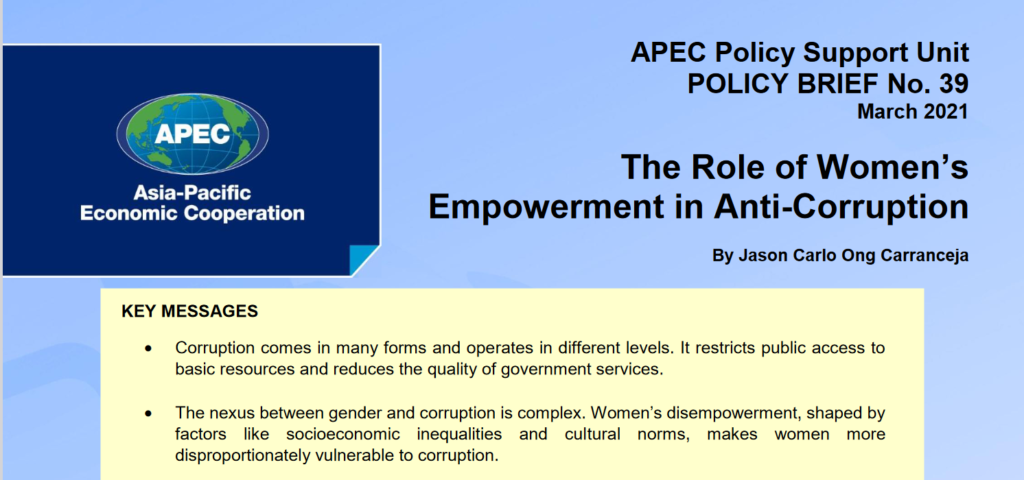KEY MESSAGES
Corruption comes in many forms and operates in different levels. It restricts public access to
basic resources and reduces the quality of government services.
The nexus between gender and corruption is complex. Women’s disempowerment, shaped by
factors like socioeconomic inequalities and cultural norms, makes women more
disproportionately vulnerable to corruption.
Women’s empowerment is a powerful tool to mitigate corruption as it complicates the social
networks and mechanisms that allow corruption to proliferate.
Markers of women’s empowerment such as greater female representation in government,
higher literacy rates, and increased labour force participation are linked to reduced levels of
perceived corruption. However, recent studies argue reverse causality as reduced levels of
corruption are likely to empower more women.
Women’s empowerment helps improve the delivery of public services and sheds light on
invisible forms of corruption like when sex is involved as a currency of transaction. These two
outcomes make it less likely for women to be exploited, and places them in a stronger position
to demand accountability from those in power.
Yet, women’s empowerment should not be mistaken as a panacea for corruption. Studies have
shown that women are not necessarily less corrupt than men, and that women themselves can
engage in corrupt behaviour when given the opportunity.
APEC should continue work on women’s empowerment to bolster its fight against corruption.
In this sense, APEC economies can use the fora to discuss best practices in gender
mainstreaming initiatives and gender-sensitive mechanisms to better respond to the gendered
forms of corruption. Improving sex-disaggregated data on corruption is important to better
understand how gender impacts corruption
